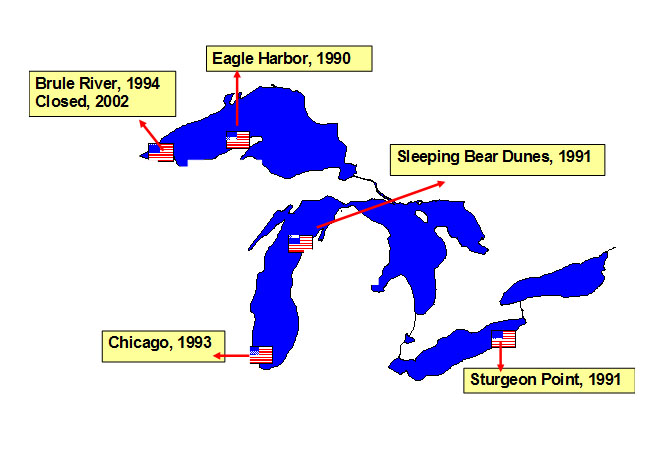Over the past few decades, the Great Lakes have been the recipient of many different persistent organic pollutants (POPs) from a variety of sources. In an attempt to better understand atmospheric deposition as one of these sources of contamination, the Integrated Atmospheric Deposition Network (IADN) was formed in 1990 through mandates of the Clean Air Act and Great Lakes Water Quality Agreement.
The project is a joint venture between Environment Canada, the Ontario Ministry of the Environment, and the United States Environmental Protection Agency’s Great Lakes National Program Office which has provided funding to the Hites’ Laboratory to manage IADN.
We operate five sites:
- Two urban sites in Chicago, Illinois, and Cleveland, Ohio
- A rural site at Sturgeon Point, New York
- Two remote sites at Sleeping Bear Dunes and Eagle Harbor, Michigan
At all the sites, vapor and particle phase air samples are collected every 12 days for 24 hours using a modified Anderson high-volume air sampler. In addition, precipitation samples are collected using MIC sampler for each calendar month. We measures 84 polychlorinated biphenyl (PCB) congeners or congener groups, 22 organochlorine pesticides (both banned and in use), 19 polycyclic aromatic hydrocarbons (PAHs), 43 flame retardants (both discontinued PBDEs and alternatives) in each of the phases.
Long-term monitoring networks like IADN are essential in understanding the behavior of pollutants in the atmosphere and making the link between policy and science.
Go to the official IADN site

